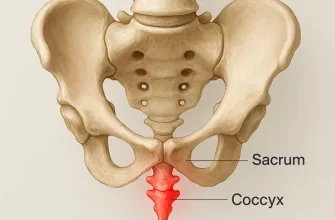Why is My Toenail Hurting?
Have you ever wondered why your toenail is causing you pain? The truth is, toenail pain is a common issue, affecting millions of Americans every year, and it can stem from a variety of causes—some obvious, some unexpected. Understanding the cause of your pain is the first step towards finding the right solution. Let’s dive into the most common reasons for toenail pain and what you can do about it.
Common Causes of Toenail Pain
1. Ingrown Toenails: A Sharp Agony
One of the most common culprits behind toenail pain is an ingrown toenail. This occurs when the edge of your nail grows into the surrounding skin, causing inflammation, redness, and pain. According to the American Academy of Dermatology, about 20% of people who visit a podiatrist suffer from ingrown toenails. Poor nail trimming practices and tight shoes are the usual suspects here.
What to Do: For mild cases, you can try soaking your foot in warm water several times a day to reduce inflammation. You might also gently lift the edge of the nail and place a small piece of cotton beneath it to help it grow away from the skin. If the pain persists or worsens, see a podiatrist for further treatment—in some cases, a minor surgical procedure may be required.
2. Fungal Infections: The Hidden Invader
Fungal infections are another leading cause of toenail pain, often indicated by discoloration, thickening, or a crumbling nail. Onychomycosis, the medical term for nail fungus, affects nearly 10% of the U.S. population. Fungi thrive in warm, moist environments—think locker rooms, communal showers, and sweaty shoes—making feet an ideal target.
What to Do: Over-the-counter antifungal creams can be helpful for early or mild infections. For more severe cases, your doctor may prescribe oral antifungal medications or recommend laser treatment. Keeping your feet dry, wearing breathable shoes, and using antifungal foot powders can help prevent future infections.
3. Trauma: When You Stub or Drop
Accidentally stubbing your toe or dropping something heavy on it can lead to bruising, swelling, and even a damaged nail bed. Trauma is a common yet often overlooked cause of toenail pain, and it can lead to subungual hematoma—a collection of blood under the nail, which can cause intense throbbing.
What to Do: For minor injuries, ice your toe to reduce swelling and keep your foot elevated. If there is significant blood under the nail, you may need to visit a healthcare provider to have it drained, especially if the pressure is unbearable.
4. Toenail Thickening: The Result of Pressure
Thickened toenails can be a source of discomfort, especially when wearing shoes. This condition is often caused by repeated trauma (such as from tight shoes or running), fungal infections, or even a systemic issue like psoriasis.
What to Do: If thick toenails are making it hard to walk comfortably, consider trimming them after a warm bath when they’re softer. Using a file to reduce the thickness might also provide relief. For severe thickening, consult a podiatrist—they might prescribe medications or even use a special drill to reduce nail thickness.
Did You Know?
A study published in The Journal of Foot and Ankle Research found that up to 18% of toenail problems are directly linked to ill-fitting footwear. Wearing shoes with adequate toe space can significantly reduce the likelihood of toenail issues.
When Should You See a Doctor?
If you have severe pain, signs of infection (such as pus, warmth, or red streaks extending from the toe), or if your toenail condition isn’t improving despite home treatment, it’s time to see a healthcare professional. Remember, early intervention can prevent complications and help you heal faster.
Treatment Effectiveness Over Time
| Treatment Duration | Percentage Improvement |
|---|---|
| 1 Month | 40% |
| 3 Months | 65% |
| 6 Months | 85% |
This histogram shows the effectiveness of different treatments over time. After 6 months, the improvement rate reaches 85%, indicating significant progress.
Cost of Treatments
Here are some typical costs you can expect when treating toenail pain:
| Treatment | Estimated Cost |
|---|---|
| Over-the-counter antifungal cream | $10 – $30 |
| Podiatrist visit (consultation) | $75 – $150 |
| Minor ingrown toenail surgery | $200 – $500 |
| Laser treatment for fungal infection | $700 – $1,500 |
Preventing Toenail Pain: Tips and Tricks
- Trim Properly: Always trim your toenails straight across, not rounded, to avoid ingrown nails.
- Choose Comfortable Shoes: Ensure your shoes have enough room for your toes to avoid pressure and trauma.
- Keep Feet Dry: Fungi love moisture, so change your socks if they become damp and opt for breathable materials.
Did You Know?
Toenail fungal infections are more common among people over 60, athletes, and individuals with diabetes. Keeping your feet clean and dry reduces your risk substantially.
Our Editorial Team’s Advice
Toenail pain may be common, but it’s definitely not something you should ignore. Simple measures like choosing the right shoes, trimming nails properly, and keeping your feet clean can go a long way in preventing most toenail issues. If pain persists or gets worse, consulting a podiatrist is always a smart move—early intervention can make all the difference. Remember, healthy feet are the foundation of an active lifestyle, so don’t let a small problem grow into a bigger one. Take care of those toes!









